Recent Fire Damage Posts
Preventing a Fire at Your Business | SERVPRO of Downtown Downtown Las Vegas
6/22/2023 (Permalink)
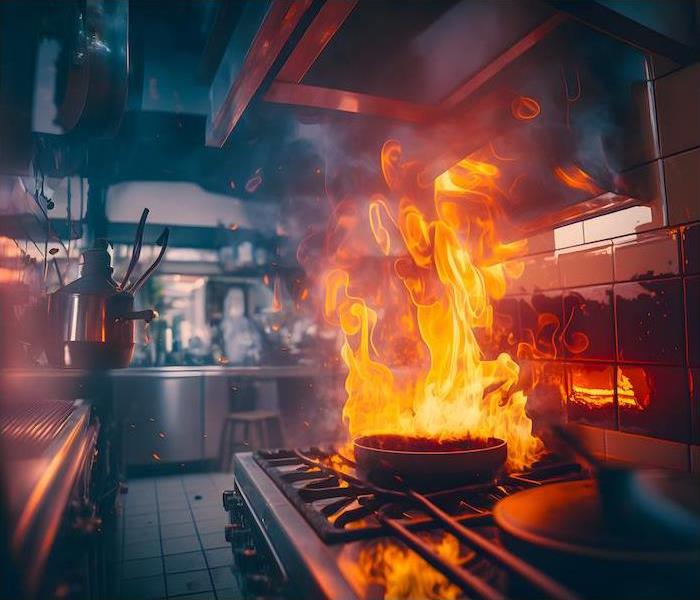 Has your home or business been affected by a fire? Call SERVPRO of Downtown Las Vegas to restore your space.
Has your home or business been affected by a fire? Call SERVPRO of Downtown Las Vegas to restore your space.
Life can get pretty busy as a business owner in Downtown Las Vegas! Since it seems like the city never sleeps, it can be easy to get caught up in the tasks and jobs you need to do to keep your restaurant or establishment running without taking extra precautions to prevent disaster.
However, all it takes is one simple accident to lead to a serious situation. Fires are a common threat to business owners, and they can cause significant damage in a short amount of time. By taking these daily precautions, you can reduce your risk and stay open for business.
Keep It Clean
We are sure that you have a proper opening and closing cleaning checklist that your staff follow, but be sure they are wiping down your equipment thoroughly after each day. Grease can quickly build up on the edges of fryers, cooktops and hoods, leading to a serious situation. In addition, you should have your hoods and ducts cleaned professionally to ensure that any buildup is removed and your exhaust can exit in a safe manner.
You should also be smart about the positioning of your cooking equipment! Try to keep your fryers at least a foot away from any flame–producing equipment, as a single spark could ignite the hot oil and start a massive fire. Every commercial kitchen needs to have a fire extinguisher, so ensure your staff knows where it is and how to use it.
Plan to React
While you can do your best to prevent a fire from occurring, it might not always be possible. In these cases, you need to have a backup plan in place that will quickly snuff out any flames. A working sprinkler system can snuff out a fire in seconds and can easily be installed throughout your place of business.
There are also fire-suppression systems on the market that are really helpful back in the kitchen where grease and oil are being used often. These systems work similarly to a sprinkler system, but chemicals are sprayed out of them instead of water. These chemicals are designed to stop tricky fires like grease fires from spreading.
What to Do After a Fire
Even if you take all the precautions and set up everything so you can react quickly, fires are naturally unpredictable. As soon as the flames are out, pick up the phone and call SERVPRO® of Downtown Las Vegas! We are trained in large loss recovery and commercial property damage and we can work alongside you to ensure a fast recovery.
We know that every minute you are closed can be detrimental to your business, so we focus our efforts on quick and efficient work. When we are through, you would never know your business suffered such an intense disaster!
Are you dealing with fire damage to your commercial property? SERVPRO of Downtown Las Vegas can help.
5 Essential Steps to Create an Effective Office Fire Escape Plan
4/11/2023 (Permalink)
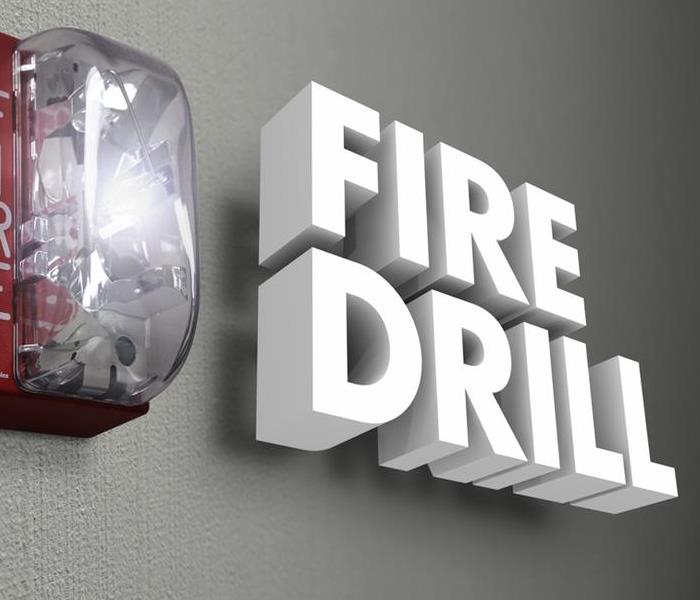 Have an fire escape plan is essential for safety for everyone.
Have an fire escape plan is essential for safety for everyone.
An office fire can be a terrifying and life-threatening experience. That's why it's crucial to have a well-prepared office fire escape plan in place. A fire escape plan outlines the necessary steps to follow in the event of a fire, allowing you and your colleagues to evacuate the building safely and quickly. In this article, we'll guide you through the essential steps to creating an office fire escape plan.
Understand the building's layout
The first step in creating an effective fire escape plan is to understand the building's layout. You should know the location of all the exits, emergency staircases, and fire escapes. Knowing where these exits are located will help you determine the best escape routes during an emergency.
Assign Roles and Responsibilities
Next, you need to assign roles and responsibilities to the members of your team. Decide who will be responsible for calling the fire department, who will assist people with disabilities or mobility issues, who will shut off the electricity or gas, and who will make sure that everyone is accounted for.
Determine Escape Routes
Identify the quickest and safest escape routes from each area of the building. There should be at least two escape routes from each room in case one is blocked. Mark these escape routes clearly and make sure everyone knows where they are.
Communicate the Plan
Once the plan is created, it's essential to communicate it to everyone in the office. Hold a meeting or training session to explain the plan and answer any questions. Post the plan in visible locations throughout the office, such as near exits and in common areas. Regularly remind everyone of the plan and conduct regular fire drills.
Review and Update the Plan
Finally, regularly review and update your fire escape plan. Check if any changes have been made to the building, such as new exits or construction. Make sure that all emergency equipment, such as fire extinguishers and smoke detectors, are in working order. Review the roles and responsibilities of each team member and ensure everyone is familiar with the plan.
In conclusion, creating an office fire escape plan is essential for ensuring the safety of everyone in the building. By understanding the building's layout, assigning roles and responsibilities, determining escape routes, communicating the plan, and regularly reviewing and updating the plan, you can be confident that your team is prepared in case of an emergency. Remember, it's better to be safe than sorry, and creating a fire escape plan is an important step in keeping your team safe.
Understanding Smoke Damage
2/7/2023 (Permalink)
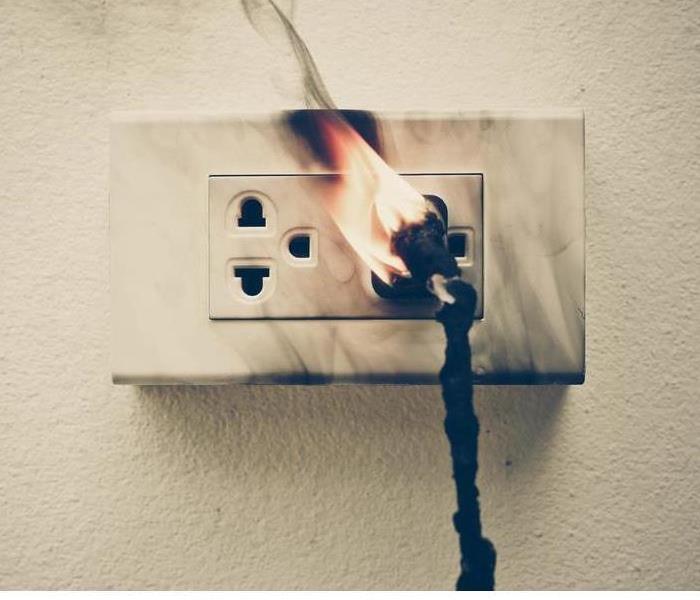 When your home suffers from smoke damage, give the professionals a call today!
When your home suffers from smoke damage, give the professionals a call today!
Smoke damage is one of the most challenging forms of damage you may have to deal with. The heat, odor, and soot residues that come from a fire are complicated in their makeup and difficult to handle. Different types of smoke will produce different types of damage. This type of damage needs special attention, both in terms of cleaning up the source of the problem and restoring your property to its previous condition.
One of the most challenging forms of damage
Smoke damage is one of the most challenging forms of damage you may have to deal with. Smoke can come from a number of different sources, including fires, barbecues and cigarettes. The smoke itself will stain and discolor surfaces and fabrics in your home if left untreated.
Fire cleanup process can be difficult
The fire cleanup process can be difficult to handle on your own. Hiring the right people for the job is important. One of the most damaging consequence of smoke is its acidic residue. Acidic fumes can etch glass or stain paint and will leave behind an unpleasant odor even after the fire has been put out. The longer you wait before addressing smoky odors, the more likely it will become permanent.
Different types of smoke will produce different types of damage
Different types of smoke will produce different types of damage. This type of damage needs special attention, both in terms of cleaning up the source of the problem and restoring your property to its previous condition. The heat, odor, and soot residues that come from a fire are complicated in their makeup and difficult to handle. The same is true with most other kinds of smoke-related damage: they can be difficult or impossible to completely remove without professional help—and even then they may not go away completely due to chemical reactions between certain chemicals found in burning materials (such as plastics) and the air itself.
Smoke can stain and discolor surfaces
Smoke can cause staining and discoloration on surfaces and fabrics. The acid residue found in smoke can etch glass or stain paint. Smoke damage can be a serious problem, requiring professional attention right away can help reduce having to replace the surface or fabric.
Smoke damage can also cause unpleasant odors
Smoke odor is a problem that needs to be addressed as soon as possible. It is caused by the lingering gases, particles and chemicals in your home after a fire or other type of smoke damage. Lingering gases and chemicals left untreated can cause further damages to your home.
The best way to remove smoke smell from your house is through cleaning up all the dust and debris left behind after such an incident occurs. This will help reduce odors greatly but might not eliminate all traces of them entirely depending on how severe things were before cleanup began. The process of fire removal is specific and is more efficient with professionals who specialize in cleanup procedures.
Find a professional immediately
If you are hiring a company to clean up the damage to your property, it is important to look for one that has experience with fire damage. You want to make sure that the company is licensed and insured, as well as being in business for many years.
Smoke damage is a serious problem that requires professional attention right away. Smoke damage cleanup companies have experience cleaning up fire damage, removing smoke odor, and restoring your property to its pre-fire condition.
If your home has been contaminated by smoke, be sure to contact a professional company immediately so they can start the process of neutralizing odors and removing any lingering contaminants in your home.
Fire and smoke damage is a serious problem that needs to be addressed immediately. If you are dealing with this type of damage, we recommend calling in a professional restoration company who can help restore your home or business back to its original condition as quickly as possible.
What Are The 5 Different Classes Of Fires?
12/1/2022 (Permalink)
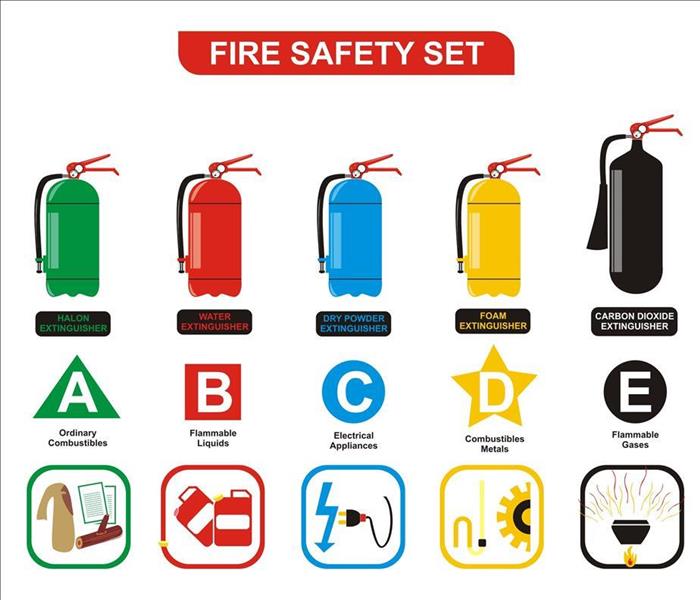 Each fire requires different types of extinguishers and safety procedures.
Each fire requires different types of extinguishers and safety procedures.
The Five Different Classifications Of Fires
A fire can be a dangerous and destructive force of nature. But fires aren't all the same, and each one requires different types of extinguishers and safety procedures to put it out. In this article, we'll discuss the five different classifications of fires: Class A, B, C, D and K. By understanding how each type of fireworks, you can better protect yourself from potential harm while preparing for the worst-case scenario.
Class A fires
As the name suggests, Class A fires are ordinary combustibles such as paper, cloth, wood, and rubber. These are the easiest to extinguish because they are the easiest to see and feel. They can be put out with water or CO2 fire extinguishers.
Class B fires
Class B fires are those that involve combustible materials other than wood, cloth, rubber, and plastics. Examples of Class B fires include:
- Liquids that can form flammable mixtures with air or substances that produce toxic vapors when they burn.
- Gases (other than carbon monoxide) that burn with a color equivalent to the flame produced by a candle of the same diameter in air under normal conditions. Some examples are propane and butane.
- Flammable liquids that produce toxic fumes when burned (for example paint thinner).
Class C fires
A Class C fire is a combustible metal fire. This includes any type of electrical wiring and tools that use wires to start fires, such as soldering irons, arc welders and plasma cutters. The most common fuel for this type of fire is copper wire.
Class D fires
Class D fires are the most dangerous of all and the most difficult to extinguish. They include flammable metals and liquids, such as gasoline, kerosene, diesel fuel and other corrosive liquids. Class D fires must be extinguished with Class D fire extinguishers, which are pressurized to a higher level than other types of fire extinguishers.
The reason these types of fires are so dangerous is because they can rapidly spread across a large surface area; they produce dense black smoke that reduces visibility. They react violently with water, and their vapors may cause suffocation or chemical burns if inhale. It can also be hard for fire fighters to access them due to their location, because they often occur inside enclosed spaces where there isn't enough oxygen available for breathing. And because of the nature of the ignition in Class D fires, these fires are extremely difficult to extinguish and must be treated with the utmost care. Always call in professionals for Class D fires!
Class K fires
Class K fires include:
- Electrical Equipment Fires
- Fuel Gas Fires (including natural gas and propane)
In the end, it’s not about the fire itself. It’s about how you prepare for it. When you know the various classes of fires, you can better prepare yourself and others around you for any possibility.
3 Ways To Remove Smoke From Your Home After a Fire
8/30/2022 (Permalink)
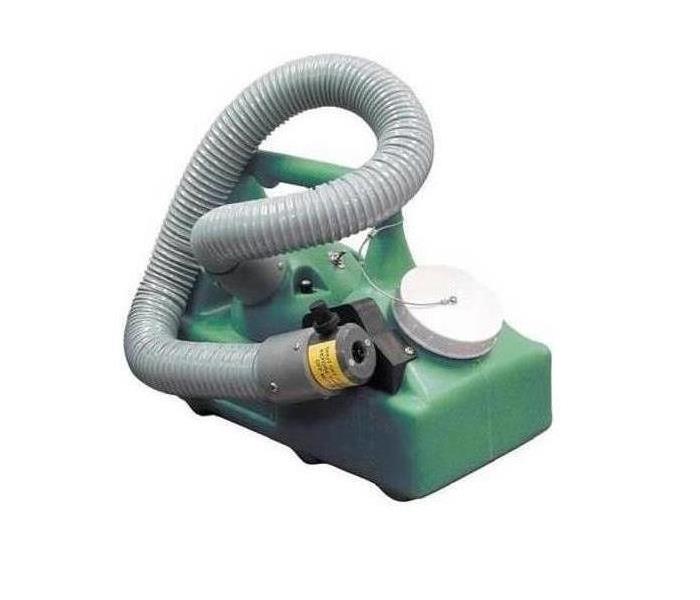 Thermal foggers use heat and pressurization to stop harmful particulates in their tracks
Thermal foggers use heat and pressurization to stop harmful particulates in their tracks
Here Are Three Smoke Removal Equipment
After a fire, you want to eliminate all traces of it using effective smoke cleaning methods. Fire restoration professionals in Las Vegas, NV have mastered the art of smoke removal. Here are three common machines they use to restore your home to livable condition:
1.Air-Filtration Devices
After a fire, particulates may linger in the air that is undetectable to the eye but nonetheless cause damage. If these contaminants enter your HVAC system, they can circulate throughout your home. Air-filtration devices use filters to improve the quality of your breathing spaces. The most powerful machines filter the air in several stages to capture both large and small particles.
2.Ozone Machines
Ozone machines are an aggressive way to eliminate smoke damage. The type of air you breathe is known as dioxygen and is comprised of two oxygen molecules. Ozone machines release the more unstable trioxygen, which has three oxygen molecules. The trioxygen easily binds to pollution such as smoke, mold, bacteria, and viruses to destroy the contaminants. This method can freshen your living space through smoke cleaning in a short amount of time.
3.Thermal Foggers
To remove heavy smoke odor, thermal foggers use heat and pressurization to stop harmful particulates in their tracks. The machine generates a dry fog by vaporizing and condensing a special fluid. The dry fog is released into the air and attaches to the porous odor chemicals to deodorize them. Thermal foggers are effective because the fog can reach anywhere that smoke does, including tiny cracks in the walls or floor.
After a fire, you want to repair your home as quickly as possible so you can return to a normal life. Restoration experts in Las Vegas, NV can access the damage and use a variety of smoke cleaning methods to get your property in top condition. Air filtration devices, ozone machines, and thermal foggers are three advanced technologies every professional should have on hand.
Having Your Furnace Inspected: 3 Scheduling Tips
6/7/2022 (Permalink)
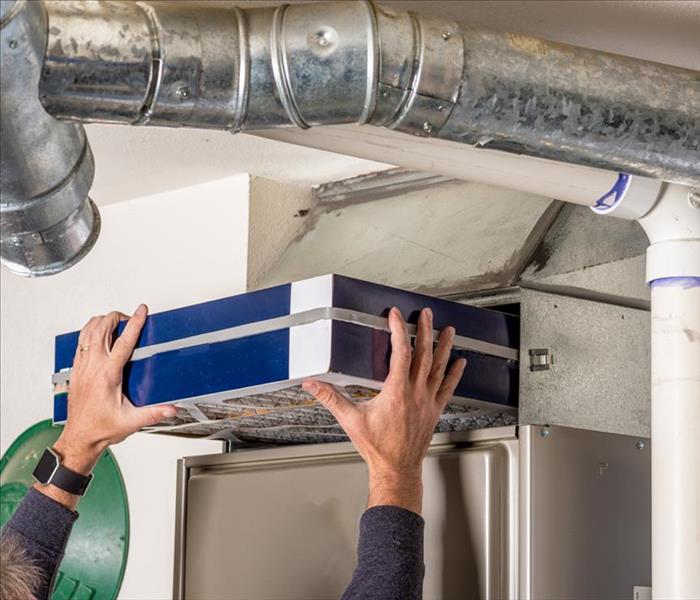 Replacing the filters before you turn on your HVAC unit is a wise idea.
Replacing the filters before you turn on your HVAC unit is a wise idea.
Three Scheduling Tips for Having Your Furnace Inspected
When cold weather arrives in Las Vegas, NV, turning on your home's heater and feeling that rush of warmth can make you and your family feel safe and cozy. However, when you hit that switch and something does not sound or smell right, calling in a service that specializes in ductwork and fire cleaning can help you sort out the issue, and several clues could indicate when it is time to schedule an inspection.
1. When the Heater Smells Strange
When you turn on your heater and the emanating heat smells bitter, acrid or like smoke, then you may need your ducts and filters replaced. Replacing the filters before you turn on your HVAC unit for the fall is a wise idea, as they can collect pet hair, dust and dirt over the summer months. If you recently replaced your filters but the furnace still smells strange, then you may want to schedule an inspection.
2. When You Hear Odd Noises
You are likely familiar with how your home's heater sounds as it moves through a cycle. Most units light, turn on, run until the room reaches the set temperature, then shut off. Popping, odd crackling sounds or unusual noises when the system lights or turns off may mean problems with the pilot light or the sensor. If smoke accompanies the sounds, then calling in a smoke cleaning service for an inspection may be a wise choice.
3. When a Fire Cleaning Company Recommends Service
Having your heater and ductwork cleaned by a fire restoration and smoke cleanup service twice a year can help prevent problems that may shorten your system's life. Schedule these cleanings when the company recommends them and add a reminder to your fall calendar to arrange an appointment before the cold weather sets in.
When your Las Vegas, NV, home's furnace malfunctions, it can be a significant cause for worry. calling in a fire cleaning service for inspection and maintenance can give you peace of mind and warm your home and family safely, all winter long.
5 Steps To Prepare Your Home for a Fire
5/26/2022 (Permalink)
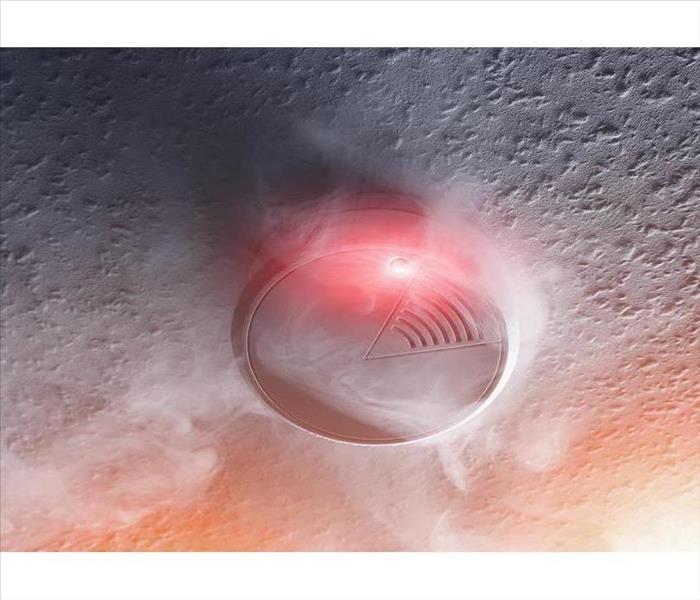 Test your smoke alarms regularly and replace batteries at a minimum of once per year.
Test your smoke alarms regularly and replace batteries at a minimum of once per year.
Fire Preparation Measures
As a responsible homeowner, it remains your duty to deploy good fire preparation measures. The better you ready your family to handle a fiery crisis, the lower your odds of someone suffering harm. Here are five ways to make sure your household avoids injury during a blaze.
1. Install Smoke Alarms
Modern residences come with smoke alarms pre-installed, but many older structures lack them entirely. Check that there is one in each key location within your home in Downtown East, NV. Test them regularly and replace batteries at a minimum of once per year.
2. Educate Children
Children need specific instruction regarding what to do during a home fire. Gently explain the seriousness involved without causing fear. Make sure they know what fire alarms sound like and review the wisdom of stopping, dropping and rolling.
3. Plan Escape Routes
A big part of fire preparation involves making certain everyone knows how to exit during an emergency. Plan multiple ways of escaping from every room. Remind minors that it is okay to break glass when necessary to get out.
4. Establish Communications
Another important aspect of fire safety is making sure family members are accounted for. Designate a spot for your clan to gather after each person has found his or her way outside. Make certain your family is capable of easily texting one another.
4. Run Practice Drills
Reinforce what you have taught by rehearsing fire emergency procedures. Push your smoke alarm’s test button and instruct everyone to yell “fire” as they make their way outside. Test their ability to think quickly by creating unexpected obstacles. Once everyone is safe, your only worry should be fixing structural damage after the blaze has been extinguished.
During a fire, your family’s odds of reaching safety depend upon their readiness level. Take fire preparation duties seriously so that loved ones have the lowest possible chance of experiencing trauma.
Essential Elements of Commercial Fire Preparation
5/17/2022 (Permalink)
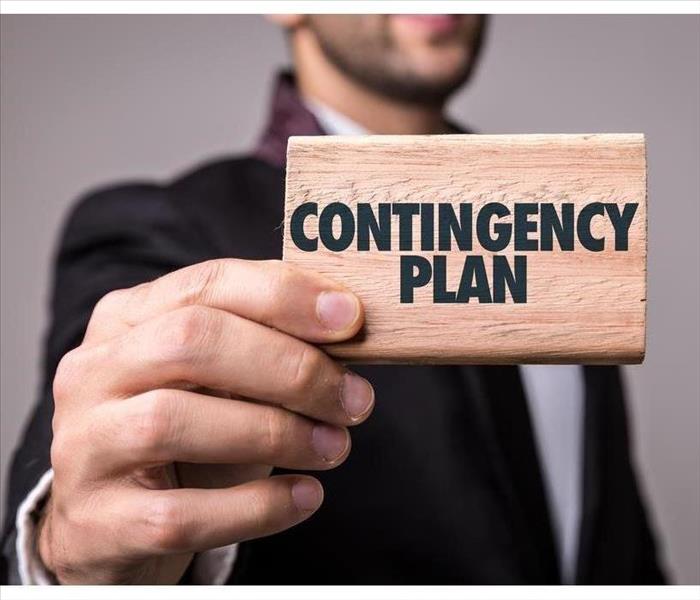 A contingency plan for a commercial fire should cover many aspects.
A contingency plan for a commercial fire should cover many aspects.
Commercial Fire Preparation
In 2020, fire departments in the U.S. responded to about three fires every minute. While many of these fires were small or dealt with residential properties, that still leaves a lot of commercial fires that impacted companies. These statistics alone should make the case that your business in Showboat, NV, should strongly consider a contingency plan. A well-thought-out plan can prevent injuries as well as reduce property damage.
The Evacuation Plan
One of the first priories during a fire is getting everyone to safety. Your company should make sure all employees and customers know where to go in case of a fire. This is usually a safe space outside of the building. Gathering everyone together is a quick way to ensure that all people are accounted for. This will help the fire department in case someone remains inside the building.
The Response Tools
As a true emergency, a fire calls for a fast response in many different areas. Having these vital tools in place with a complete contingency plan will help your company mitigate the damages from a fire:
- Fire alarms
- Fire extinguishers
- A fire sprinkler system
- A posting of fire department contacts
- A posting of contacts for medical first responders
- A first aid kit
Employees must know how to use these resources in a time of confusion and chaos. Fire safety drills are good tools that help employees better handle an emergency.
The Recovery Process
While a local fire restoration franchise cannot do much while a fire rages, it should be called soon afterward. A rapid response will minimize many types of damage, from water damage as a result of the fire department's efforts to weather damage in the case of a ruined roof system. Trained technicians will take appropriate and efficient action that speeds up the recovery process.
A contingency plan for a commercial fire should cover many aspects. Its purpose is to minimize or eliminate fire damage.
How Can a Fire End up Causing Water Problems?
3/7/2022 (Permalink)
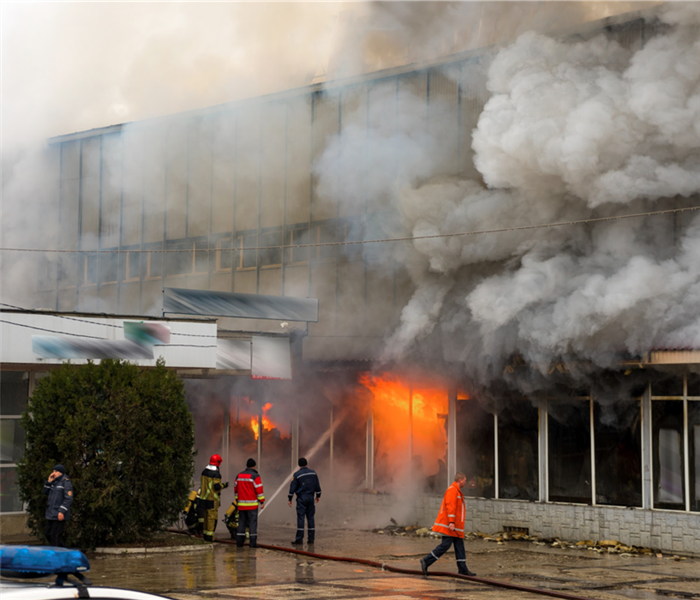 Fire and water damage in a building in Showboat, NV.
Fire and water damage in a building in Showboat, NV.
How Does a Fire Result in Water Issues?
When you think of a fire, you probably consider water as the fastest, most effective way to put it out. Indeed, the right amount of water can make quick work of a blaze and reduce the amount of fire damage that could occur in your Showboat, NV, office. But did you realize that while water is essential in fire suppression, it also can work against you? Because so much water is used to eliminate the flames, it's not uncommon for flooding and other related problems to ensue.
What Does It Hurt?
A fire in your place of business isn't something you want to think about ever happening. This disaster could cause harm and terrible damage in the workplace. While a fast-moving fire can quickly destroy parts of your building, water damage is often more gradual and even unnoticeable at first. Be aware of the following victims of flooding:
- Electronic equipment, including computers, printers and servers
- Furniture
- Documents, photographs, x-rays, blueprints
- Carpet
- Drywall
Built-in Sprinklers
A fire sprinkler system can be a wise investment for any business. This can be the first response to a blaze in the workplace and may help to get the incident under control before the fire crew even arrives. If you want to reduce the risk of fire damage, make sure you have a system and that it is in top-notch condition. However, these devices unleash a significant amount of water as soon as they sense a certain amount of heat. The volume of water coming from these sprinklers can ruin your floors and various materials.
Firefighting
The fire crew is essential to putting out the blaze, but each fire hose will put out as much as 500 gallons of water each minute. This can inflict tremendous damage to your office. While you're relieved the firefighters can eliminate the fire, their actions may require that you get in touch with a professional water removal company to help restore your office space.
Fire damage can be bad enough but coupled with flooding, you face a big challenge. Make sure you call the pros to help you recover from these incidents.
Choosing the Right Smoke Detector for Your Home
2/10/2022 (Permalink)
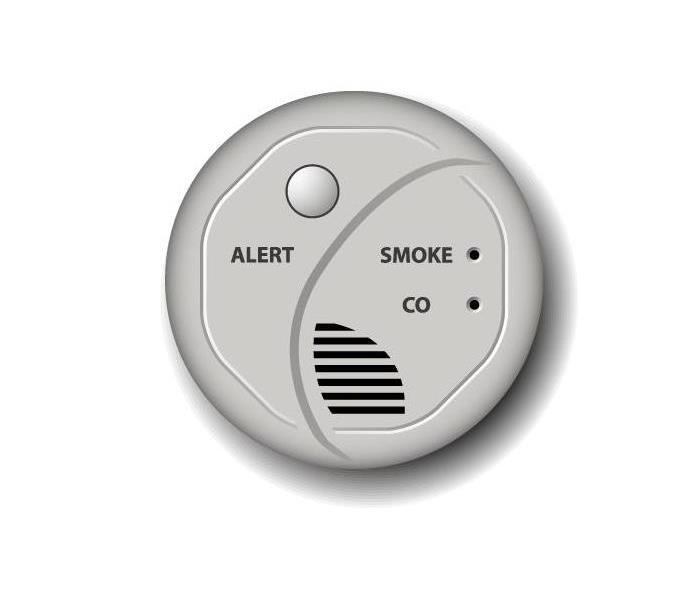 A dual-sensor smoke alarm covers both bases effectively but may cost more.
A dual-sensor smoke alarm covers both bases effectively but may cost more.
On average, when a fire breaks out in a home in Winchester, NV, the residents have between two to four minutes to get out of the house before heat and smoke overtakes them. That isn’t even enough time to fry an egg. An early warning system is critical to keeping you safe, especially if a fire occurs while your family is sleeping. The best fire safety precaution you can get is a good quality smoke alarm. Do you know which type is best for your situation?
The Difference Between Smoke Detector Types
• Photoelectric type
• Ionization type
• Dual sensor detector
• Air-Sampling smoke detector
How To Choose the Best Unit for Your Home
A photoelectric alarm actually “sees” even the tiniest particles of smoke and triggers the alarm and is the best in the event you have a very smoky fire. This would do well in areas where there are likely to be bedding or piles of laundry. An ionization unit uses a radioactive element, which is disrupted when smoke particles enter the field, setting off the alarm. They work best when fires begin in fast burning sources like grease or paper, and might work best in a kitchen, shop or garage. A dual-sensor smoke alarm covers both bases effectively but may cost more. Using one of each type in close proximity can give the same benefits. An air-sampling model can sense smoke in the air at minute levels. This may be better for homes with large rooms or high ceilings. You don’t need to choose an expensive model, and it is just as important to get install long-lasting, reliable batteries.
While hearing a smoke alarm and getting out in time is the next best thing to having no fire, a blaze can get the advantage on you in a hurry. Calling restoration service technicians in Winchester, NV can help make putting your world back together a little easier. Choosing and installing your smoke alarms is a crucial part of surviving such an event.
 Has your home or business been affected by a fire? Call SERVPRO of Downtown Las Vegas to restore your space.
Has your home or business been affected by a fire? Call SERVPRO of Downtown Las Vegas to restore your space.





 24/7 Emergency Service
24/7 Emergency Service








